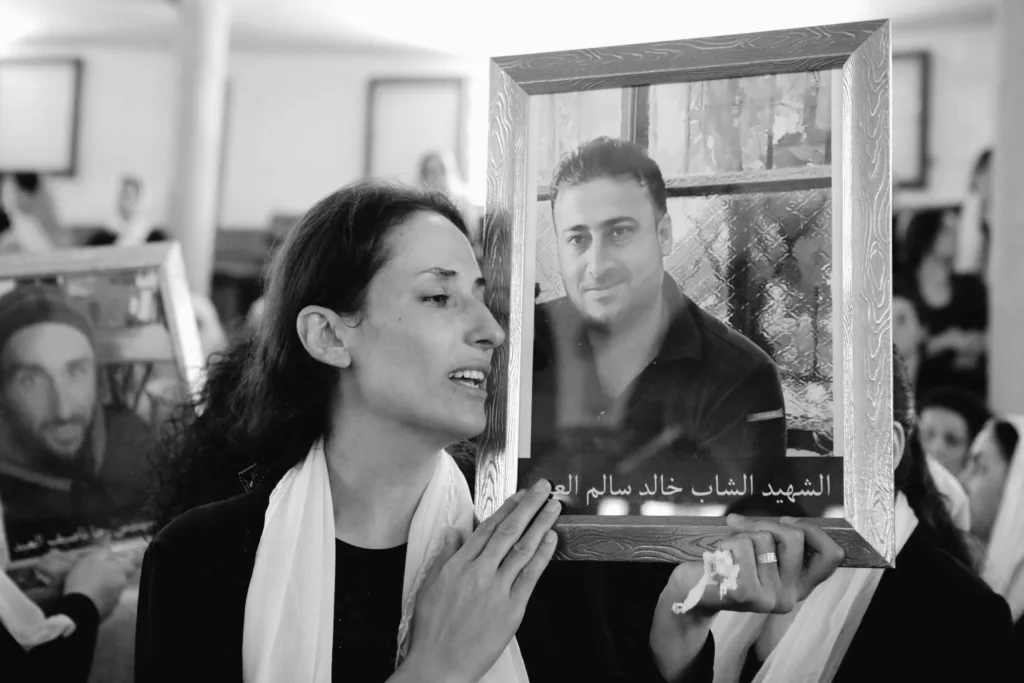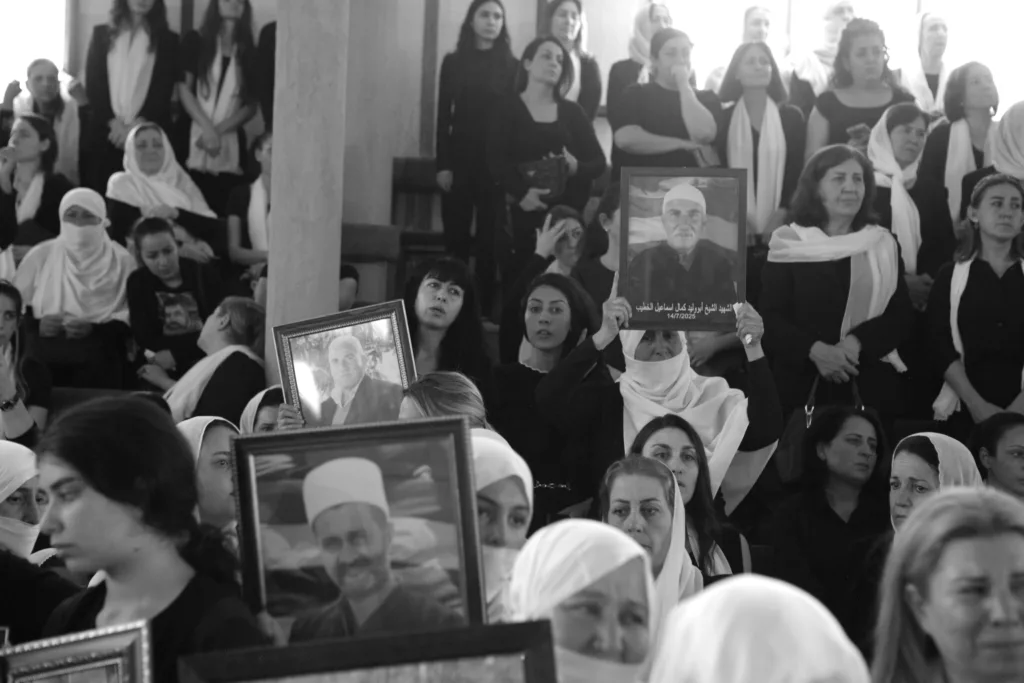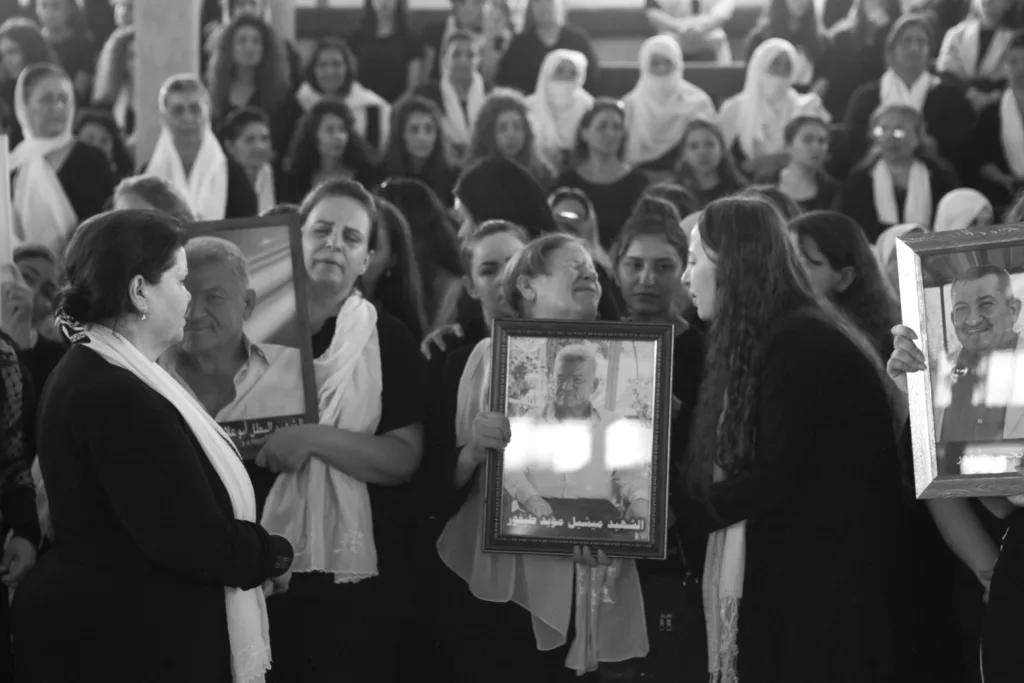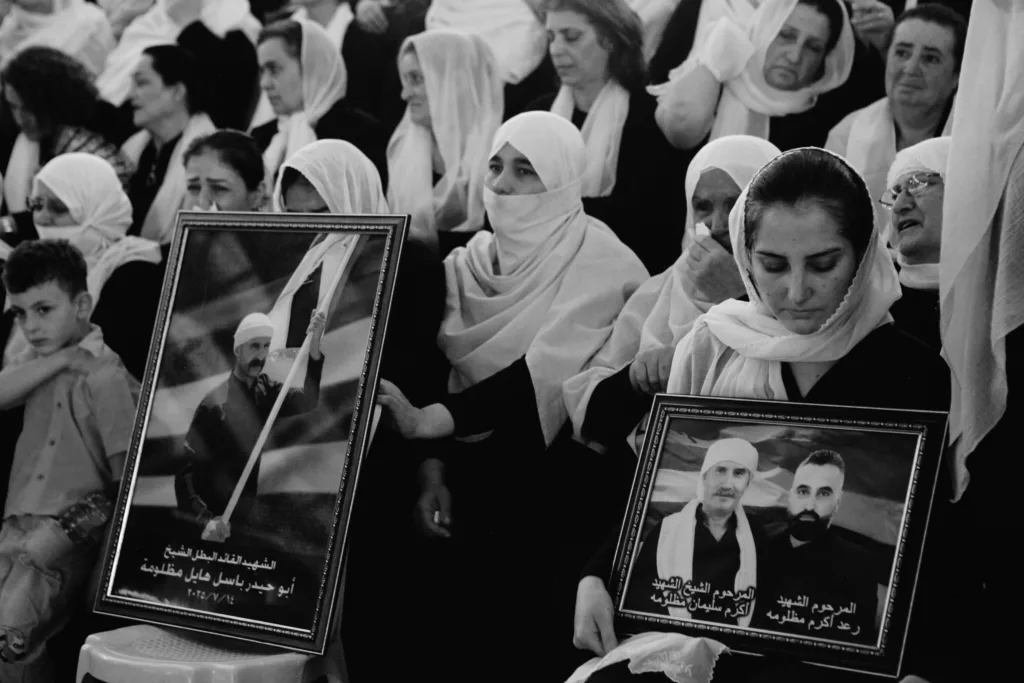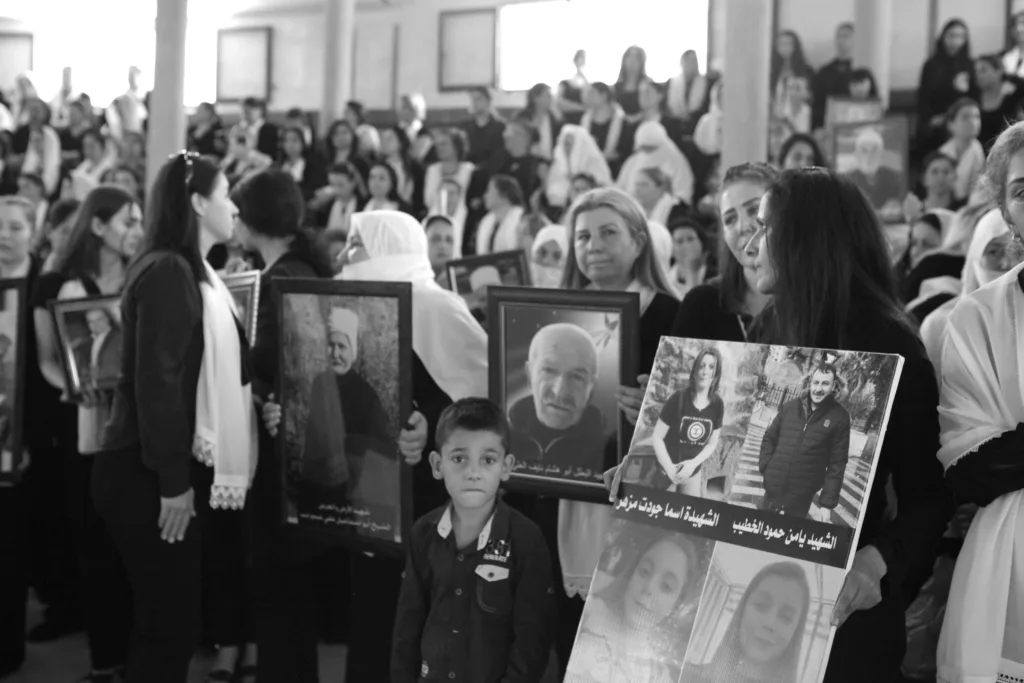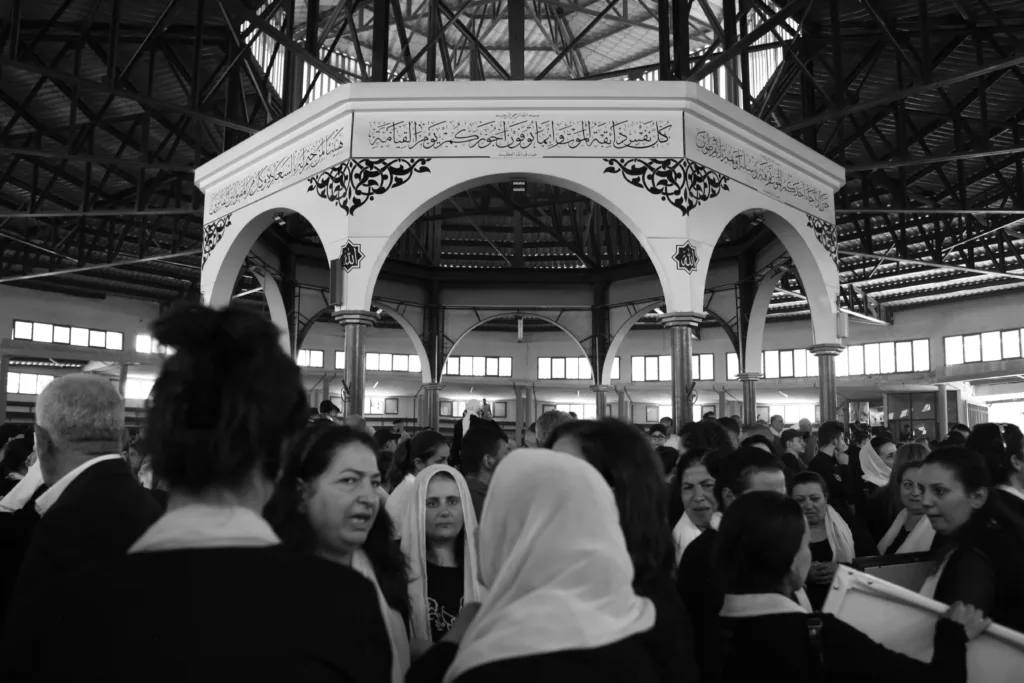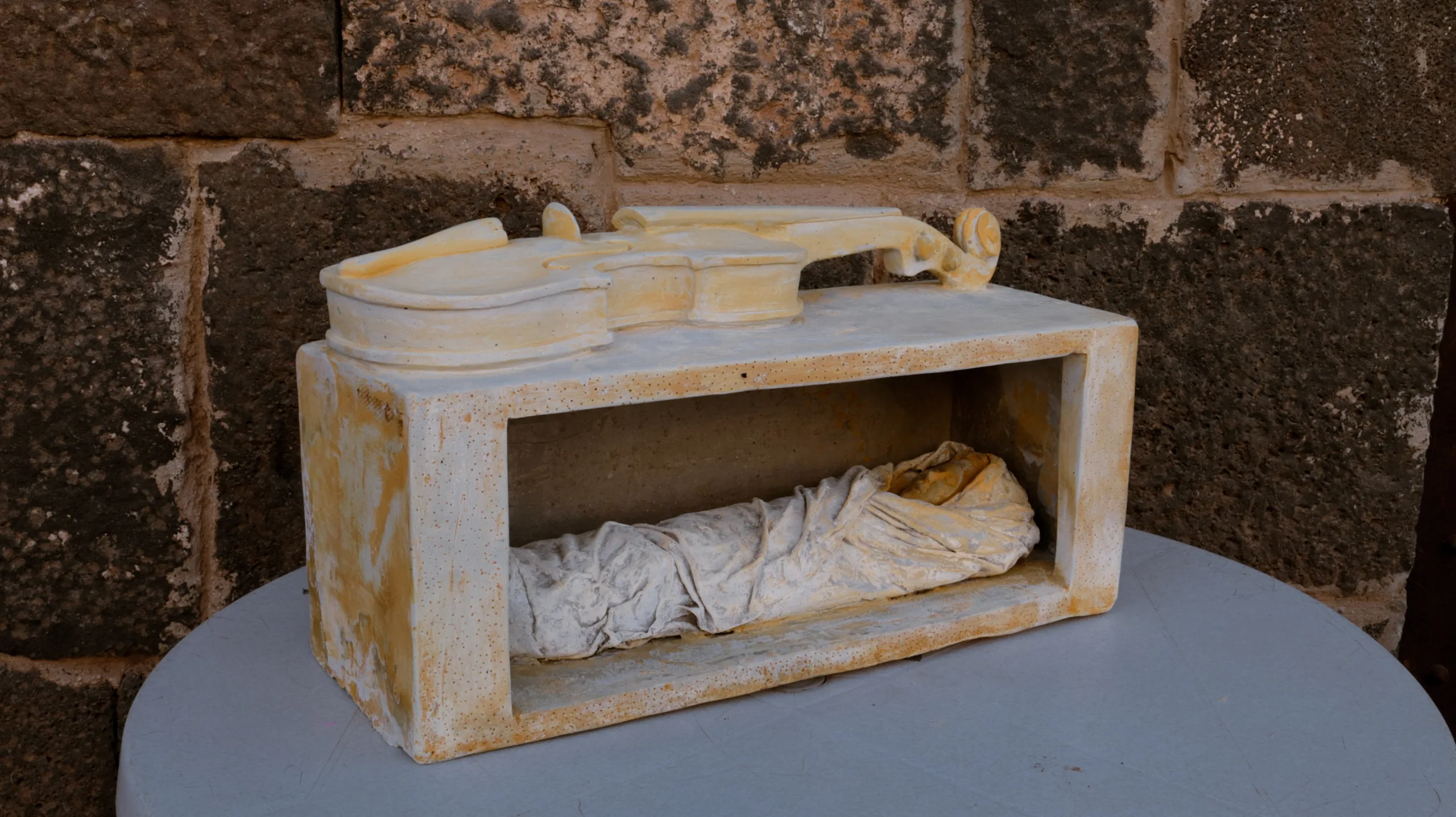As-Sweida / Sep 4, 2025.
Al-Tha’la was not a passing headline. It became a test of a province’s memory. In July 2025, an incursion into Sweida province left more than sixty residents of the town dead. Death was swift and devastating, and burial even swifter under smoke and immediate danger. There was no time for a proper farewell. The right to mourn stayed deferred in the hearts of mothers, fathers, and siblings, and the names moved through homes like restless ghosts.
When the mountain could finally breathe, September 4 opened a window onto what had been taken. Samara Square, the central plaza of Sweida, turned into a public house of mourning. There were no coffins, since the graves had preceded the mourners, yet photographs rose like second bodies, and the names were read aloud in a single voice that brought them back from absence. Symbolic in form but deeply real in meaning, the commemoration reclaimed a delayed right and restored sorrow to its shared, public place.
People arrived from villages across the governorate: men, elders, young people, and children, each carrying a part of the story. Tears mixed with long ululations, the piercing cries used across the region to honor the dead, not to celebrate but to keep each name in the air. Grief became a bridge people could cross together, rather than a wall each household leaned on alone. The square offered a common language, and loss found a safeguard against silence.
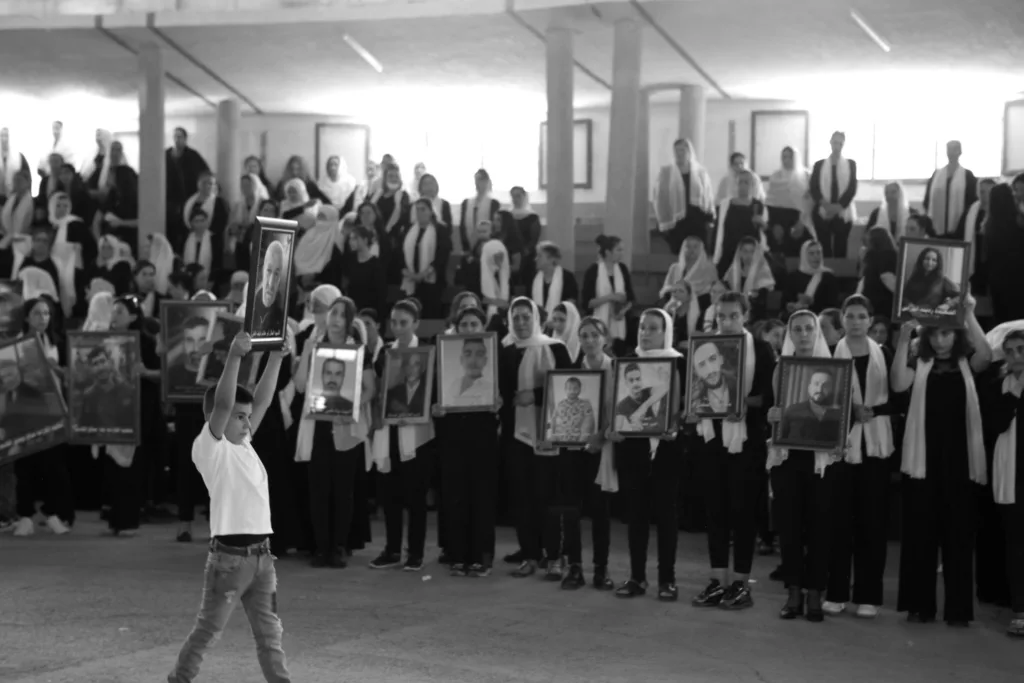
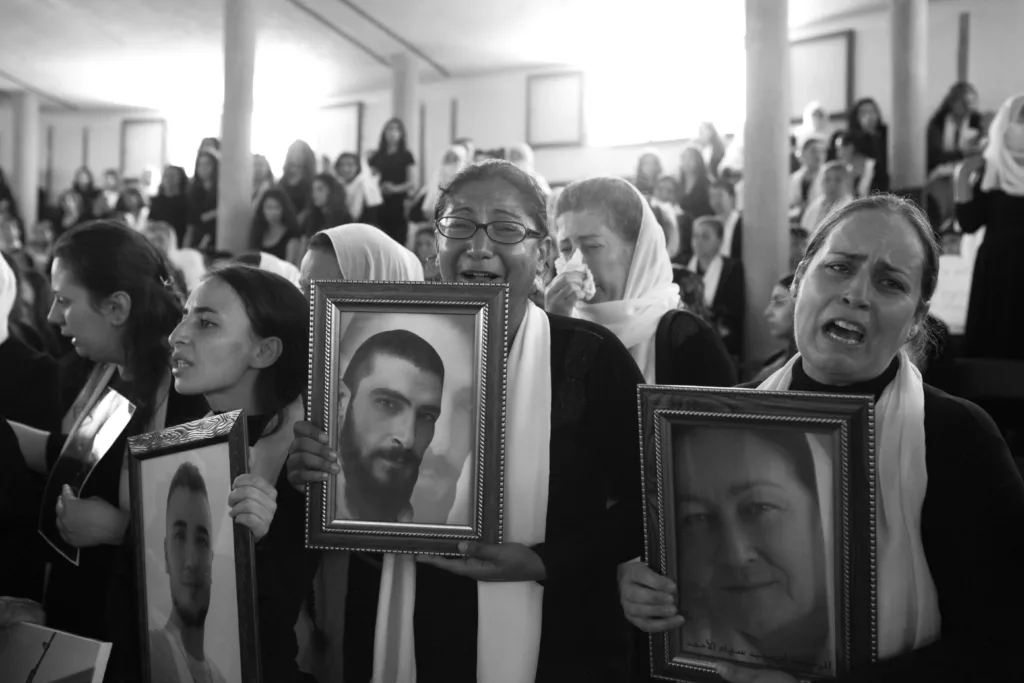
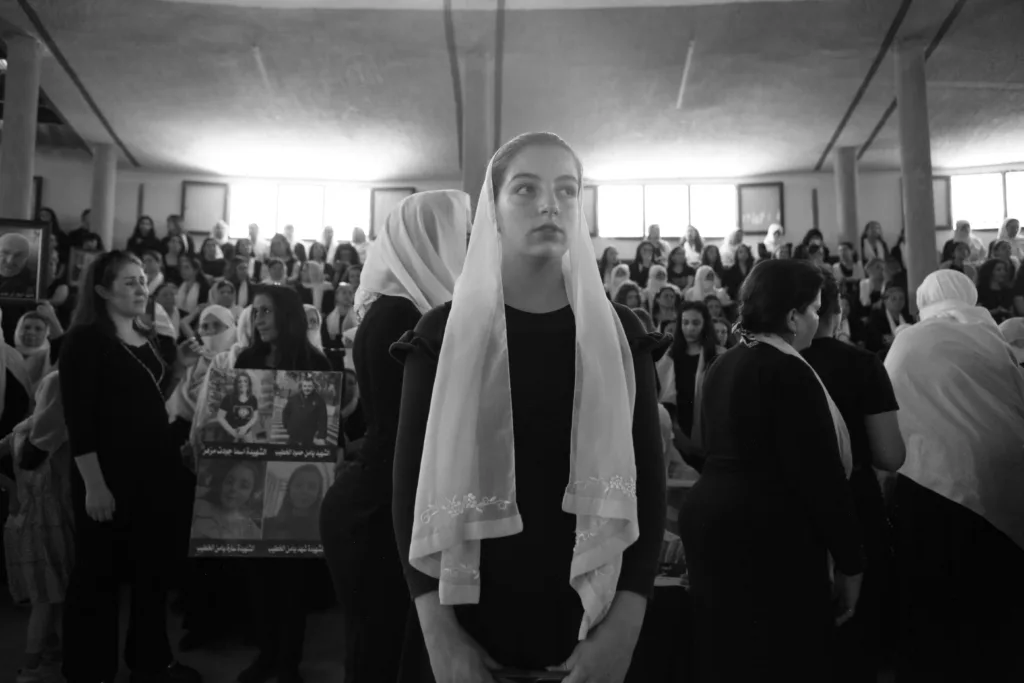
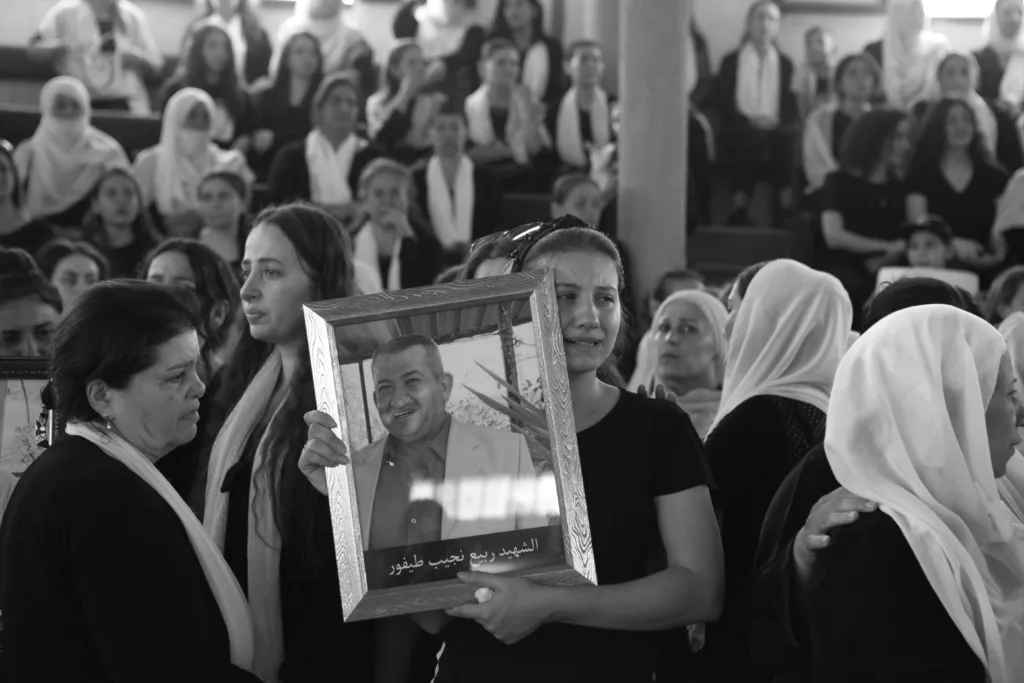
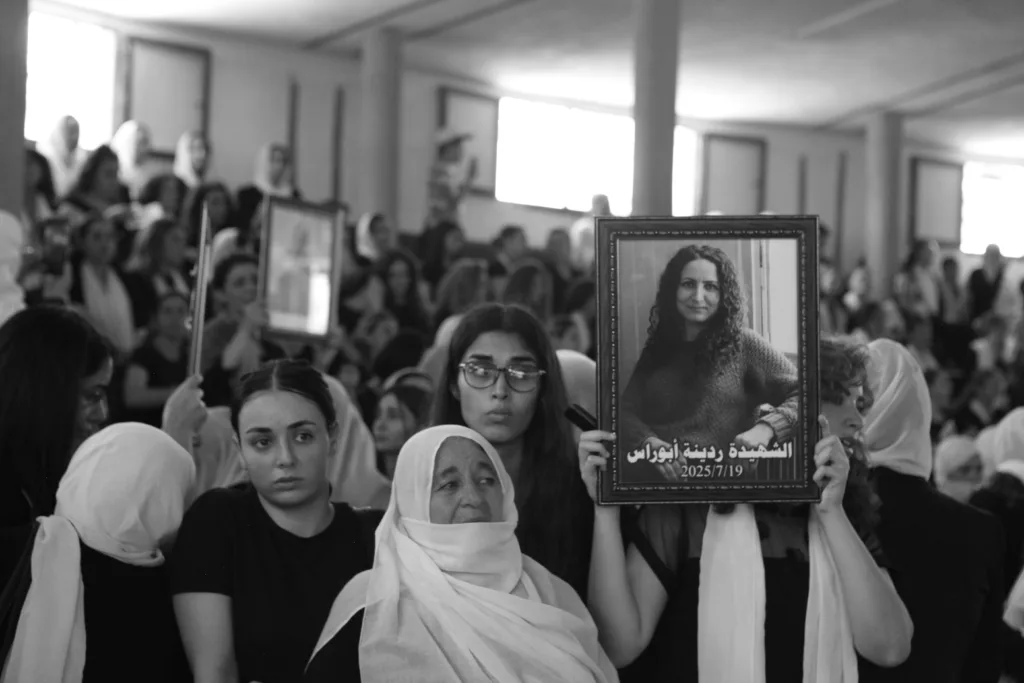
Most striking of all, women stood at the center of the scene. By custom, they gather for condolences at Ayn al-Zaman, a local shrine, while men fill public squares. This time the families insisted that mothers, widows, and sisters stand in Samara Square itself, raise the photographs, and say with their own voices that memory is not complete without them. This was not a minor social detail. It was the core of the moment. In times of fracture, ritual is not repeated word for word. It is reshaped into what people need in order to remain human. When women entered the square, they did not merely break with custom; they released mourning from its old restraints and turned the public space into an honest mirror of the wound.
In that sense, the symbolic commemoration became an act of civic resistance. The massacre seeks to scatter and silence names. The public rite gathers them and lifts them up. It tries to confine loss indoors. The square gives grief words, an echo, and a place to walk together. In those hours, the city showed its meaning: not stone or buildings, but the capacity of its people to turn pain into knowledge, knowledge into solidarity, and solidarity into a promise of life.
What happened was more than an elegy for al-Tha’la. It reordered how Sweida understands itself. When women and men share the square, the map of ritual changes and a new civic biography is written. We cannot always prevent death, yet we can refuse forgetting. Bodies reached their graves first. On September 4, the names returned to the open, carried by the promise of memory and by the safeguarded right to a public farewell.
